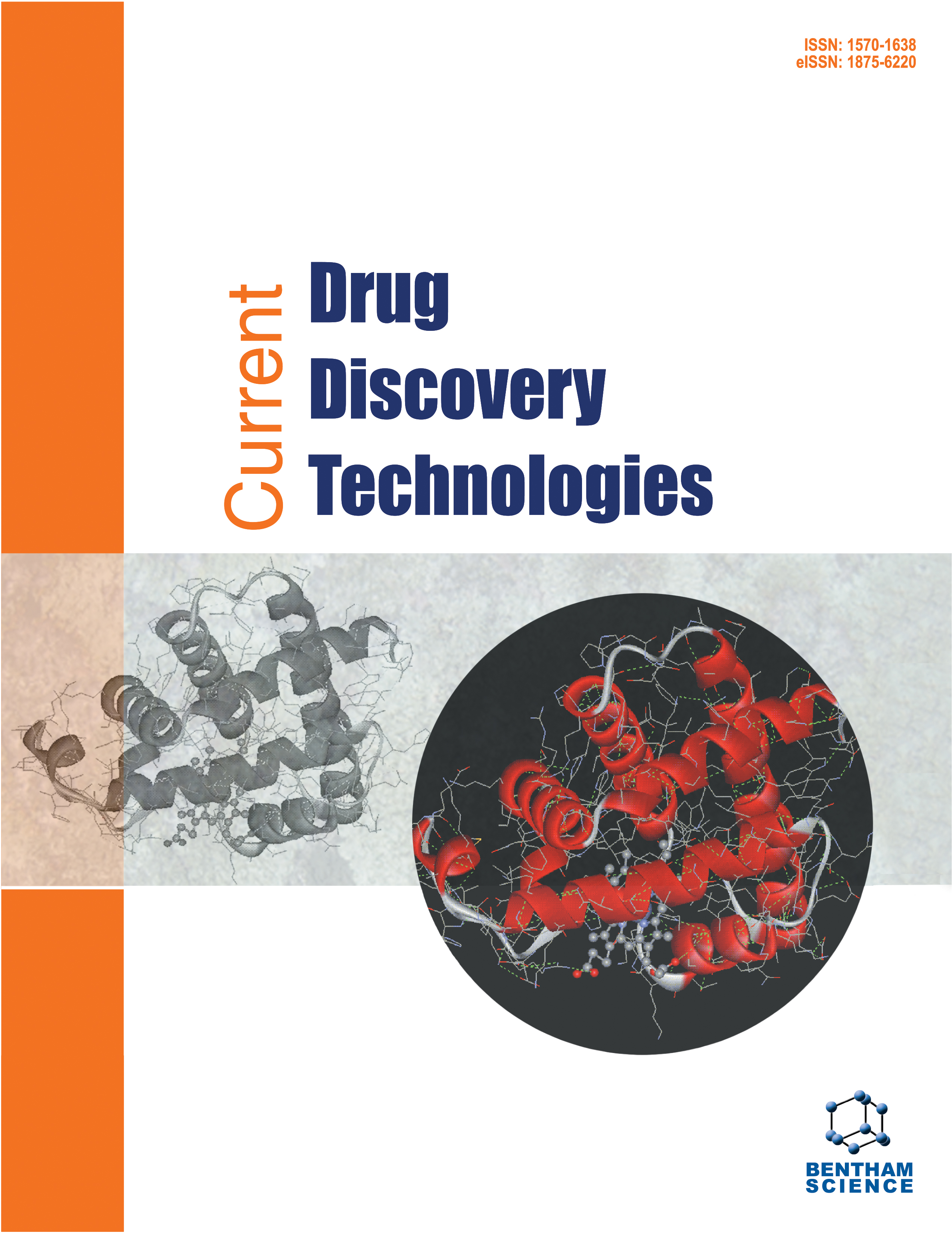- Home
- A-Z Publications
- Current Drug Discovery Technologies
- Previous Issues
- Volume 22, Issue 1, 2025
Current Drug Discovery Technologies - Volume 22, Issue 1, 2025
Volume 22, Issue 1, 2025
-
-
Harnessing the Therapeutic Potential of Dillenia indica: An Overview of Recent Dosage Form Developments
More LessDillenia indica, commonly known as Elephant Apple, is a significant medicinal plant found in Assam, North-East India. This evergreen shrub or small to medium-sized tree possesses not only tasty components but also a plethora of beneficial therapeutic characteristics. This review article aims to explore the potential use of Dillenia indica in the treatment of diabetes and other diseases, as well as discuss various patents associated Read More
-
-
-
A Snapshot of Biomarkers in Psoriasis
More LessAuthors: Krushna Abhale, Addepalli Veeranjaneyulu and Shivani DesaiA persistent long-standing, inflammatory skin condition that is brought on by a variety of factors is psoriasis. It is distinguished by itchy, scaly, reddish plaques, particularly on areas of the body that are frequently chafed, including the extensor sites of the limbs. Recent developments in molecular-targeted therapy that use biologics or small-molecule inhibitors can effectively cure even the worst psoriatic indications. The Read More
-
-
-
New 1,3,4‒oxadiazole Quinazolines as Potential Anticancer Agents: Design, Synthesis, Biological Evaluation, and In silico Studies
More LessBackground A novel series of 1,3,4‒oxadiazole connected to derivatives of quinazolinone (7a–e and 8a–f) was synthesized in the current investigation, and its anticancer and Topoisomerase‒II inhibitory activity was evaluated. Objective These findings inspired the design, synthesis, and biological analysis of these 1,3,4‒oxadiazole-quinazolinone analogues as antiproliferative Topo‒II inhibitors. Methods The novel compoun Read More
-
-
-
A Combination of Pharmacophore Generation, Ligand-based Virtual Screening, Atom-based 3D-QSAR, and Molecular Docking Studies on Febuxostat-based Amides Analogues as Anti-inflammatory Agents
More LessBackground A defence mechanism of the body includes inflammation. It is a process through which the immune system identifies, rejects, and starts to repair foreign and damaging stimuli. In the world, chronic inflammatory disorders are the leading cause of death. Materials and Methods To obtain optimized pharmacophore, previously reported febuxostat-based anti-inflammatory amide derivatives series were subjected t Read More
-
-
-
Effects of Mesenchymal Stem Cell-conditioned Media with Natural Immunomodulatory Agent Resveratrol on Type 1 Diabetes
More LessAuthors: Krushna Abhale, Veeranjaneyulu Addepalli, Shivani Desai, Avinash Sanap and Ramesh BhondeBackground Type 1 diabetes mellitus (T1DM) is a condition marked by elevated blood sugar levels and primarily recognized by the destruction of beta cells caused by an autoimmune attack, which is a significant characteristic of T1DM. Recent studies have demonstrated the regenerative potential of conditioned medium therapy. In light of this, the current research sought to assess the impact of Mesenchymal Stem Cell co Read More
-
-
-
Repurposing Phytochemicals against Breast Cancer (MCF-7) using Classical Structure-Based Drug Design
More LessBackground The significant public health effect of breast cancer is demonstrated by its high global prevalence and the potential for severe health consequences. The suppression of the proliferative effects facilitated by the estrogen receptor alpha (ERα) in the MCF-7 cell line is significant for breast cancer therapy. Objective The current work involves in-silico techniques for identifying potential inhibitors of ERα. Methods The m Read More
-
Volumes & issues
-
Volume 22 (2025)
-
Volume 21 (2024)
-
Volume 20 (2023)
-
Volume 19 (2022)
-
Volume 18 (2021)
-
Volume 17 (2020)
-
Volume 16 (2019)
-
Volume 15 (2018)
-
Volume 14 (2017)
-
Volume 13 (2016)
-
Volume 12 (2015)
-
Volume 11 (2014)
-
Volume 10 (2013)
-
Volume 9 (2012)
-
Volume 8 (2011)
-
Volume 7 (2010)
-
Volume 6 (2009)
-
Volume 5 (2008)
-
Volume 4 (2007)
-
Volume 3 (2006)
-
Volume 2 (2005)
-
Volume 1 (2004)
Most Read This Month
Article
content/journals/cddt
Journal
10
5
false
en


